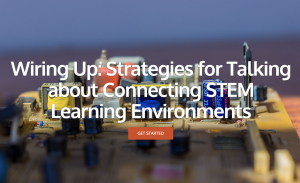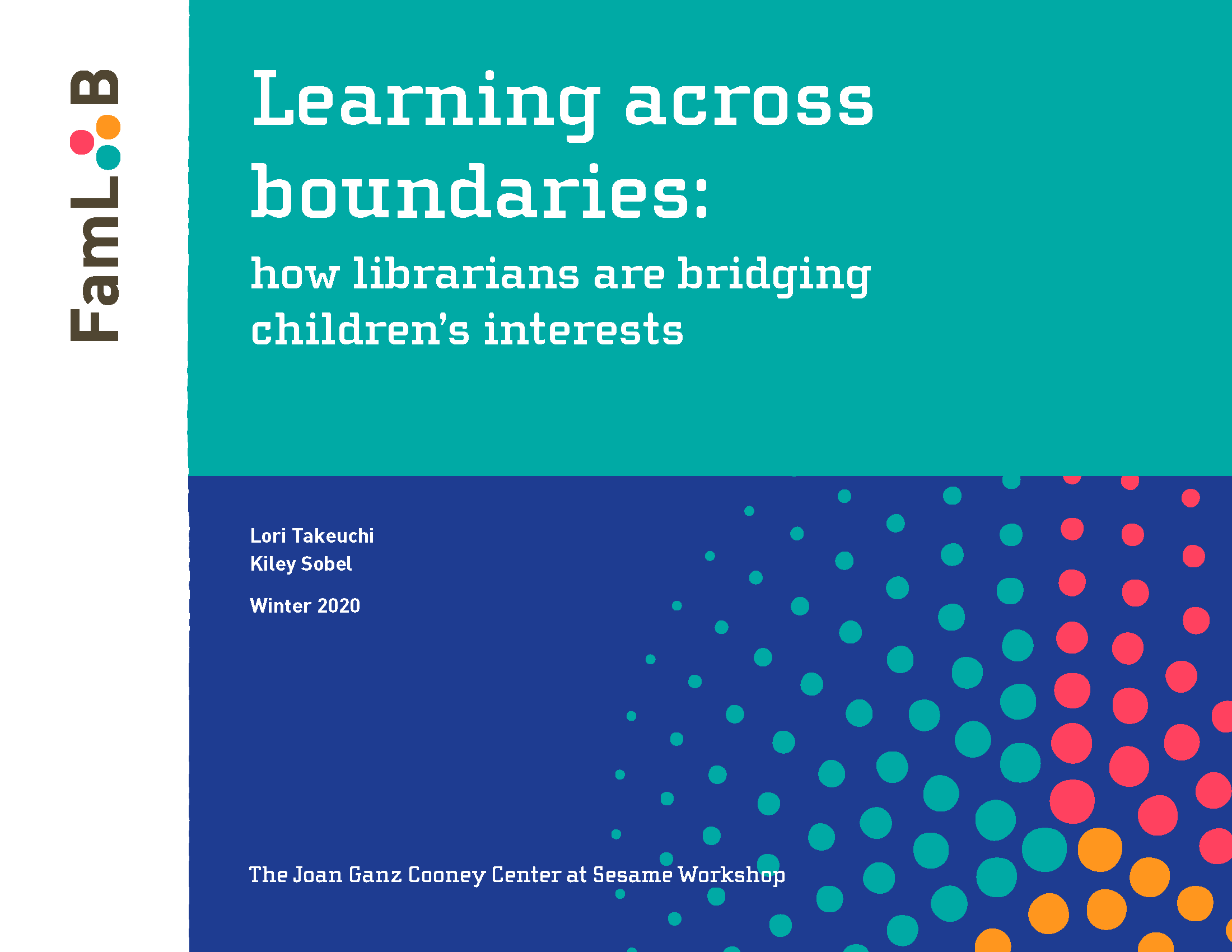To get people thinking differently about the importance of connecting STEM learning environments, and to increase public engagement in the issue, we need to start talking differently. Empirically tested strategies for how to do this are presented in a free, user-friendly communications toolkit called Wiring Up: Strategies for Talking about Connecting STEM Learning Environments. It was produced by the FrameWorks Institute and based on original research made possible through the Families Learning Across Boundaries (FamLAB) Project as well as the generous support of funding from the Heising-Simons foundation, Bezos Family Foundation, and Verizon Foundation. Here are a few highlights:

The first step in changing the conversation on any important social issue involves knowing what you’re up against—including what kinds of public-facing messages are likely to backfire, and why. (Step two is knowing what to do about it. We’ll get there in a second!) A key finding from FrameWorks’ research is that people think of the learning that takes place in informal settings—like museums, libraries, and backyards—as a nice “extra”, while they see real learning as the kind that takes place in school. Talking up the benefits of extracurricular learning may be one way the field unintentionally reinforces the “basic” vs. “bonus” STEM learning divide.
Fortunately, FrameWorks’ research has also identified an effective strategy for shifting this perception. We can help people see STEM learning as a complex system, like a machine with multiple different (and equally essential) moving parts. The metaphor of Wiring Up builds public understanding about the importance of ensuring that formal and informal STEM learning environments are effectively wired together, so that the knowledge and hands-on skills that kids develop at individual sites are allowed to merge and flow.
Another impediment to effective communication has to do with for whom STEM education is considered to be appropriate. A common assumption is that STEM learning isn’t for everyone. The thought is that STEM subjects (Science, Technology, Engineering, Math) are complicated and require an advanced skillset, which may be helpful for future engineers or star pupils with an aptitude for science but isn’t necessary for the average learner.
Appealing to the principle of Opportunity for All helps convey the importance of making connected STEM learning accessible to all children, and with their full range of interests and aptitudes in mind. This cultural value, which is deeply held and widely shared, orients public thinking to a critical fact: Universal participation in STEM not only taps the unmet potential of previously excluded groups—like students of color, students from low-income communities, and girls—it strengthens the rigor of education programs, expands the number and quality of available opportunities, and improves learning outcomes for everyone.
A related communications challenge for advocates of connected learning is to help the public recognize that institutionalized inequities exist. Sadly, many messages that aim to build understanding about the causes of educational disparities, and about the need for system-level solutions, backfire. What often intercepts communications about structural inequality is a powerful trend within public thinking that lays all responsibility for children’s outcomes at the feet of parents. Within this model of thinking, a child who isn’t doing well in math is presumed to come from a home where math skills are not sufficiently valued, or where the parents just aren’t doing enough to support that child’s progress in the subject area. In other words, the public has a very hard time appreciating that wider social and environmental factors—like under-resourced institutions, limited transportation options, varying employment demands on caregivers, inadequate healthcare coverage for families, and the uneven geographical distribution of parks, zoos, community gardens, and other learning sites, just to name a few—influence learning outcomes significantly.
To bring structural factors forward in the public mind, the metaphor of Charging Stations can help. Describing sites of learning as stations that power up kids’ knowledge and skills enhances public understanding about the importance of multiple, high quality environments. It’s also a tool for explaining that some children are in high-wattage, densely networked areas that provide lots of opportunities to get charged up, whereas others have to operate in dead zones where there just isn’t much to plug into. The Charging Stations metaphor helps convey that our current infrastructure is patchy but, more importantly, that we can rewire our power generation systems to ensure all kids, no matter where they’re located, have meaningful opportunities to energize their learning and skills. (Tip: The Wiring Up and Charging Stations metaphors, as well as the Opportunity for All value, work together as well as separately.)
Lastly, the public knows that teachers, school administrators, and classroom aides have a lot on their plates. People are reluctant to support anything that seems like it could pile on additional responsibilities for education professionals. Advocates can avoid activating this skepticism by highlighting the ways that connecting STEM learning environments supports, rather than complicates, the work of teachers and schools. Citing specific examples of productive partnerships between formal and informal educators, including how they bring greater relevance to the classroom setting and enhance student engagement, is an effective and proven framing strategy.
There’s lots more where this came from! For further information about the above framing strategies and how to use them, check out the full Wiring Up communications toolkit. You can also read FrameWorks’ Strategic Brief when you’re ready to take a deeper dive into the research findings and associated recommendations.
 Jessica Moyer is a sociologist and geographer, and a Senior Associate at the FrameWorks Institute where she helps advocates working across a range of progressive social issues engage the public in more productive conversations—ones that build public understanding and drive positive change.
Jessica Moyer is a sociologist and geographer, and a Senior Associate at the FrameWorks Institute where she helps advocates working across a range of progressive social issues engage the public in more productive conversations—ones that build public understanding and drive positive change.

